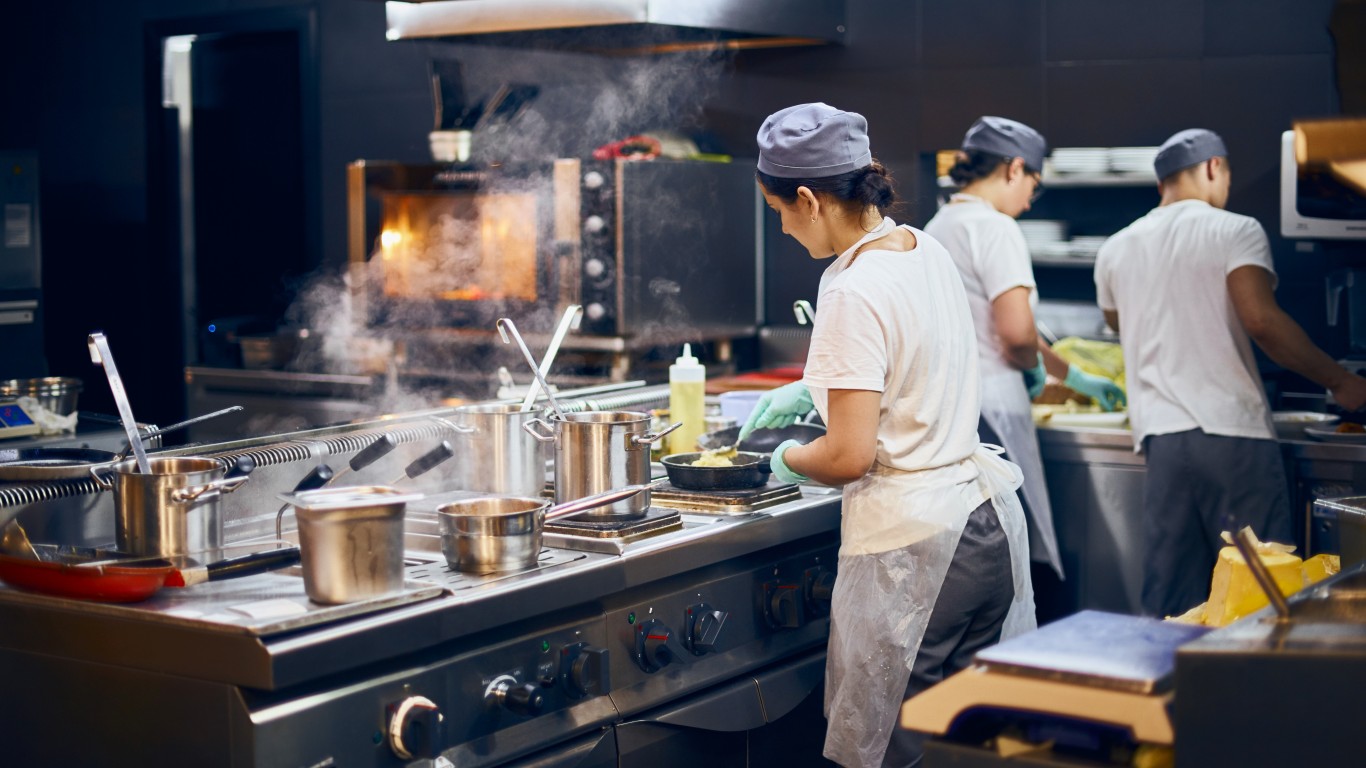What will restaurants be like in the years to come? How will the often devastating effects of the coronavirus pandemic (among other factors) alter the way we dine out? What can we expect from the places we eat or dine — whether the local burger joint or the Michelin-starred establishment helmed by a celebrity chef — in 2021 and beyond?
The restaurant industry constantly evolves, responding to changing consumer tastes, social pressures, and new rules and regulations, often adopting new technologies meant to improve diner experience or bring new tools to business management.
Data and consulting firms and foodservice trade publications regularly track trends, predicting forthcoming developments ranging from new menu ideas to high-tech innovations to the effects of demographic shifts on workforce and customer base alike.
As one example, late last year, before COVID-19 appeared, the National Restaurant Association (the so-called “other NRA”) — which represents more than 500,000 restaurants around the country and considers itself the world’s largest foodservice trade organization — released an extensive report titled “Restaurant Industry 2030: Actionable Insights for the Future.”
Prepared by the NRA in partnership with American Express and Nestlé Professional, the report contains numerous projections and predictions. Some of these predictions stem from the NRA’s own accumulation of data, but the bulk are based on a study involving more than a hundred industry experts, including NRA officials, suppliers, manufacturers, distributors, and consultants.
Not surprisingly, given the report was prepared before COVID-19, the pandemic has compromised some of the predictions — most notably the forecasts of increased revenue and restaurant expansion. Other predictions, on the other hand, probably still have a good chance of coming true in some form, especially those involving technological advances. (Alterations in food and drink purchases are among the 19 ways the coronavirus has changed what Americans buy.)
Of course, COVID-19 has also brought changes — in some cases probably permanent — that no amount of data analysis or savvy intuition could have predicted in 2019. These changes involve everything from the exponential growth of takeout and delivery to the blossoming of European-like outdoor dining areas, as well as the sad fact that many thousands of restaurants have been affected so much by the crisis that they have simply ceased to exist. These, for instance, are the saddest restaurant closings of 2020.
Based on a combination of the NRA study and other reports from a variety of business and foodservice sites, 24/7 Tempo has assembled this list of 20 ways restaurants are likely to change (or have already changed) in the months and years to come.
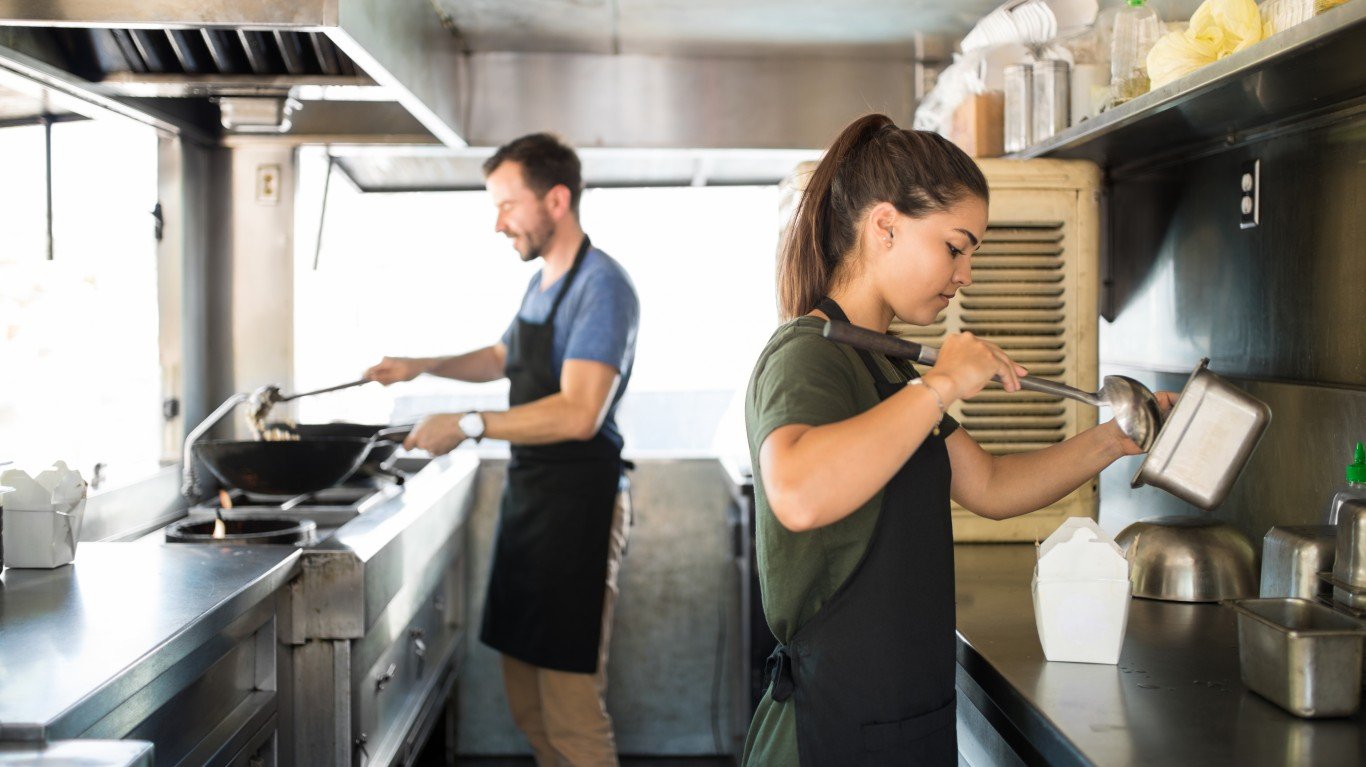
1. Ghost kitchens will haunt the dining scene
Also called “ghost restaurants,” “shadow restaurants,” “virtual kitchens,” or “cloud kitchens,” these are facilities for preparing food for delivery with no dining rooms, takeout counters, or consumer-facing storefronts. “The rise of ‘placeless’ restaurants,” reads the report, “will challenge and redefine the concept of what a restaurant is.” Other industry observers have predicted that ghost kitchens will function like food trucks, allowing restaurateurs to try out new concepts without actually opening a full-scale restaurant first. One of the more celebrated fine-dining chefs to launch a virtual kitchen operation is Chicago’s Mexican food maven, Rick Bayless. There’s even a whole virtual food hall, launched by the ghost kitchen company Zuul in New York City in October, with another one in the works.
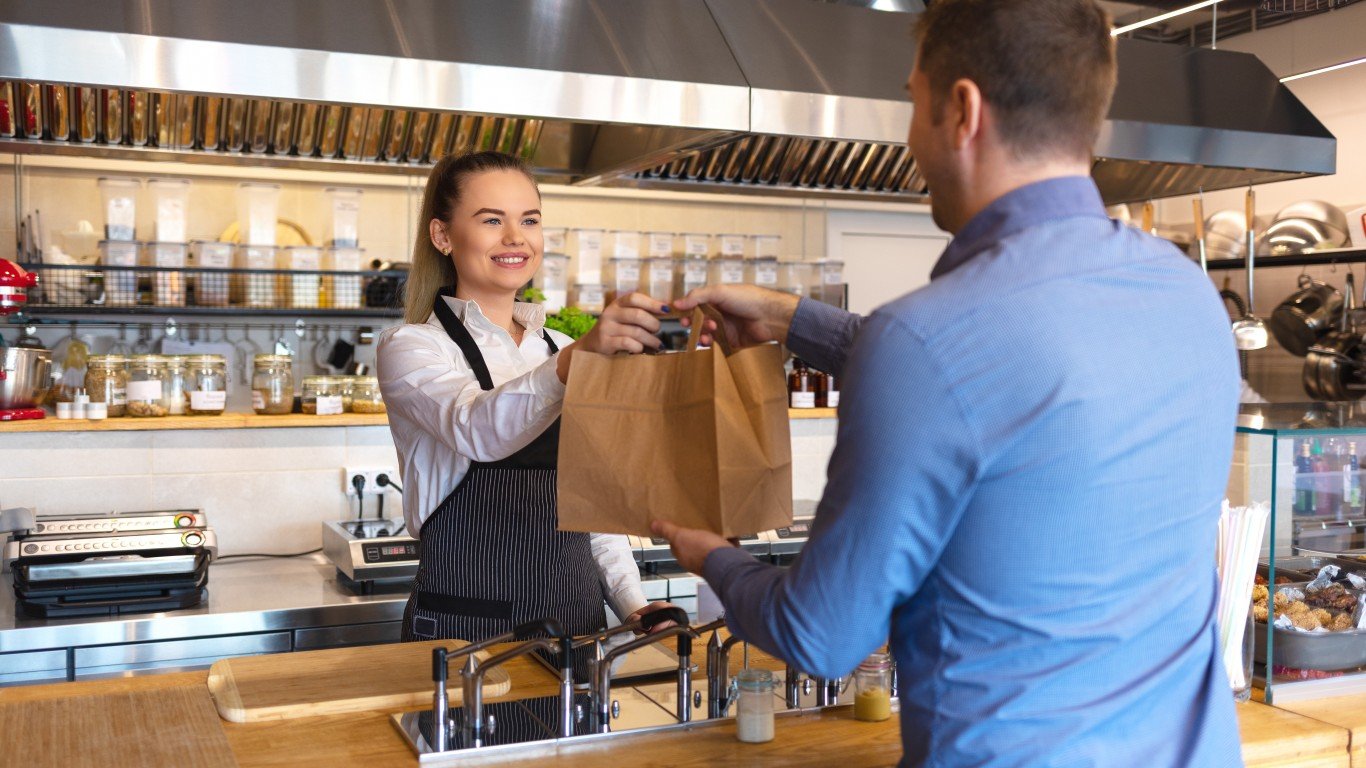
2. The definition of ‘restaurant’ will change
Taking orders tableside and delivering food to seated diners is so 2019. At least some establishments, the report suggests, will morph into hybrids, offering not just full service but also takeout, delivery, and meal kit options all in one location. Restaurant layouts will be planned or revised to accommodate delivery and takeout functions. According to the restaurant industry publication QSR Magazine, since the pandemic began, 52% of customers surveyed had bought food at drive-in windows, and 46% had used curbside pickup, while 54% had called on one or more restaurant delivery services. According to QSR, “There’s little doubt third-party delivery will remain a growing (and consolidating) player for an extended period of time.”
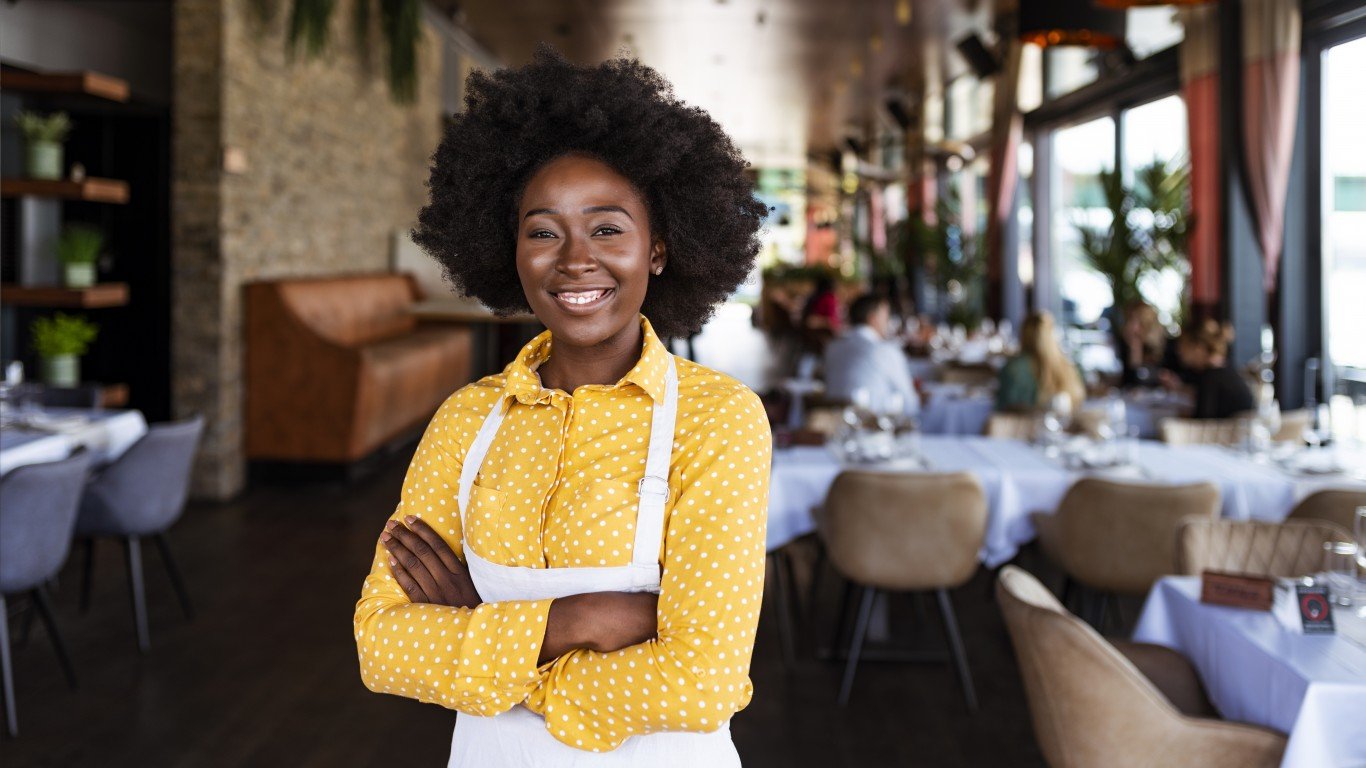
3. There’ll be less attitude, less small talk
Prominent New York City restaurateur Danny Meyer, whose 35-year-old company runs almost 20 eating places around the city, believes that once the industry is back up and running, restaurants won’t take customers for granted the way they might have once; they’ll “love you more than they ever did,” as he puts it. That translates, among other things, to less snooty attitudes at the front door. He also sees less small talk at the table (“Is the lady still working on her salmon?”) as servers concentrate on getting food out and plates cleared — even after limiting contact is no longer an issue.

4. Restaurant staffs (including management) will be more diverse
The food service industry already employs more women and minority managers than any other part of the private sector, and the industry will almost certainly become increasingly more diverse over the next decade. In addition, as the nation’s population continues to grow more diverse — and the number of older Americans increases — these demographic changes will be reflected in both the customer base for restaurants and their workforce, below management level as well as in supervisory positions.
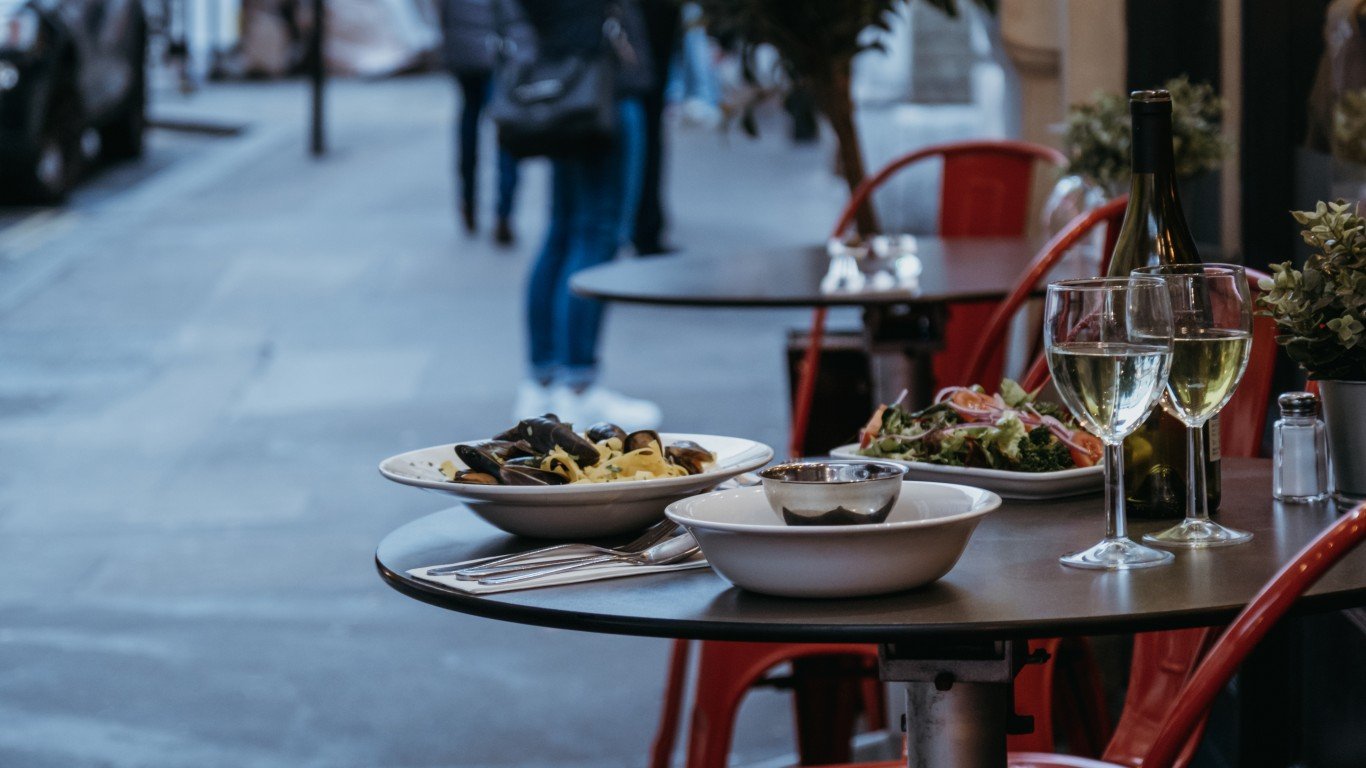
5. Outdoor dining is here to stay
When official mandates in many parts of the country limited dining room capacity and in some cases banned indoor seating altogether, restaurants — with the support of city and state governments — began setting out tables on sidewalks, in parking lots and alleys, and even on streets partially closed to traffic. New York City, Las Vegas, Philadelphia, Indianapolis, Baltimore, and Cincinnati were among the many places that granted hitherto unobtainable outdoor-use permits to restaurants. At least some urban centers began to resemble European squares crowded with outdoor cafés as a result. Of course, Al fresco dining doesn’t always work — sitting outside isn’t pleasant in hot, humid weather or the freezing cold of winter — but when conditions are good, it’s very agreeable, and a number of municipalities have made the new rules permanent.
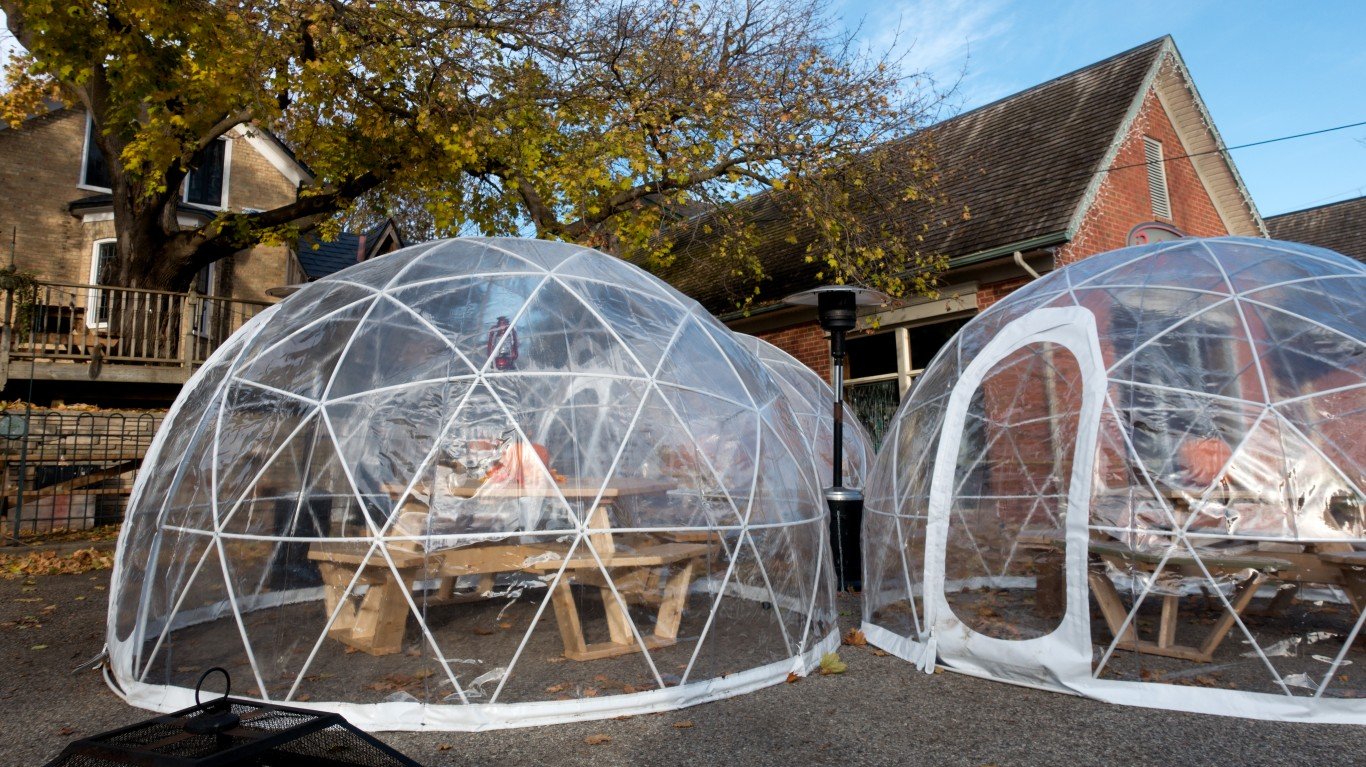
6. Private dining pods will proliferate
Restaurateurs across the country began introducing this year individual enclosed dining structures as the weather cooled and outdoor dining became more challenging. Also known as igloos, bubble tents, and domes, these pods are typically well insulated against the cold and have air circulation or filtration systems designed to lessen the possibility that they will incubate the coronavirus. Even after the pandemic subsides, some restaurants, especially in cooler climates, might find a ready clientele for the exclusive pod dining experience.

7. More drive-thrus are coming
Drive-thrus have long been a staple of the fast-food industry, but the pandemic has made them more popular than ever, both because they minimize customer contact with servers and because restaurant owners like the efficiency and safety they provide. Chipotle and Starbucks are among the big companies that have recently stepped up their drive-thru game, and smaller players like Shake Shack and Sweetgreen are following suit. Even upscale establishments are getting in on the action. In October, for instance, the restaurant reservation service Resy sponsored a two-night drive-thru pop-up event in L.A. featuring noted chefs like Curtis Stone and Nancy Silverton.

8. There’ll be cocktails and wine to go
Laws in most places used to prohibit restaurants from adding a bottle of wine or a couple of Cosmos to pickup or delivery orders. With bars and eating places in much of the country closed either completely or partially since the pandemic arrived, a number of cities and states began allowing establishments to furnish adult beverages along with food. New York, California, Texas, and Illinois are among the states that have adjusted their regulations to permit this. In some cases the new rules are only temporary, but in others, alcohol to go is probably a permanent phenomenon. Some operators are even creating their own liquor and cocktail brands and selling drinks in large formats — like Margaritas by the gallon.
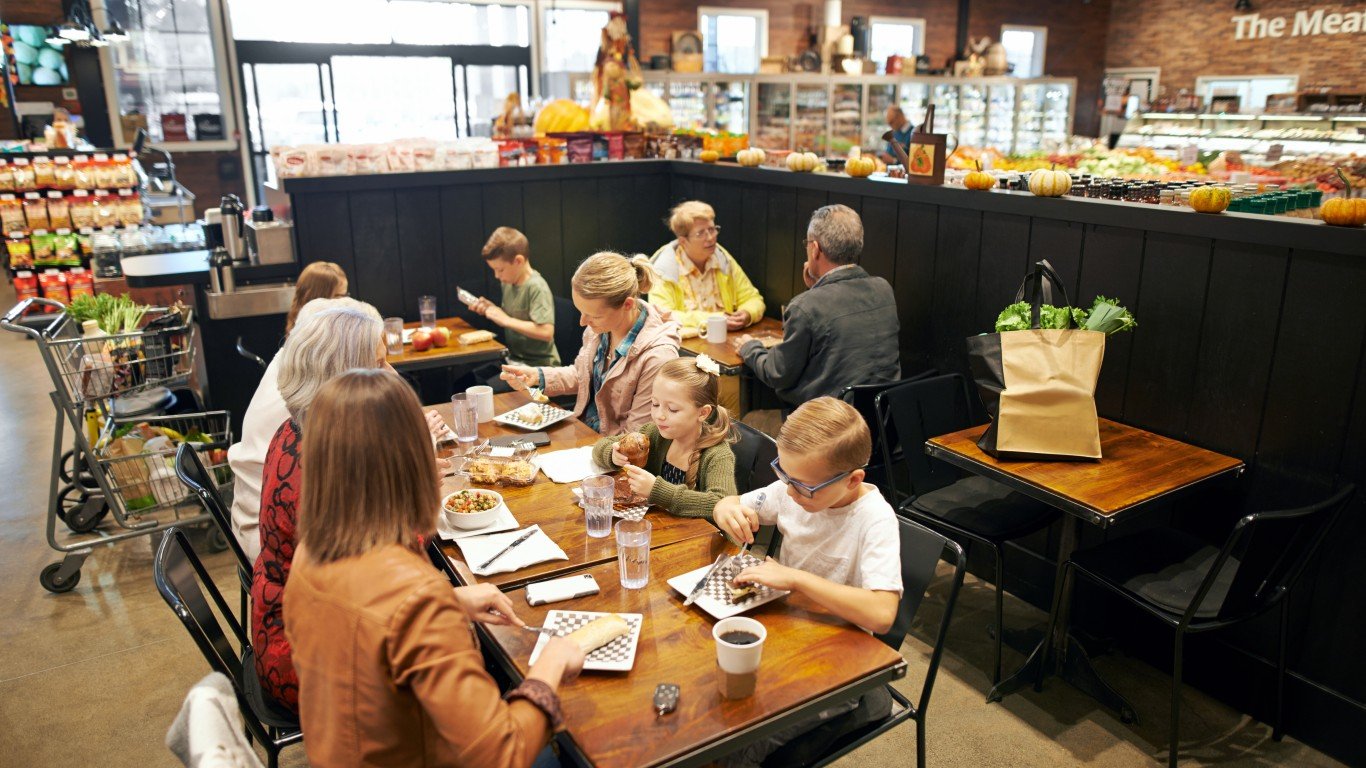
9. Restaurants will do double duty
In order to remain profitable with their dining rooms closed or restricted, some establishments have gone beyond just takeout and delivery offerings, doubling as food shops, selling staples like rice, pasta, and milk and even do-it-yourself meal kits. Another potential trend is the introduction of virtual cooking or cocktail classes: Buy the materials to go from a restaurant or bar, then head home and follow along online as the chef or bartender shares his or her techniques. If these measures prove profitable, there’s no reason to expect restaurants to phase them out even when indoor dining returns in full force.
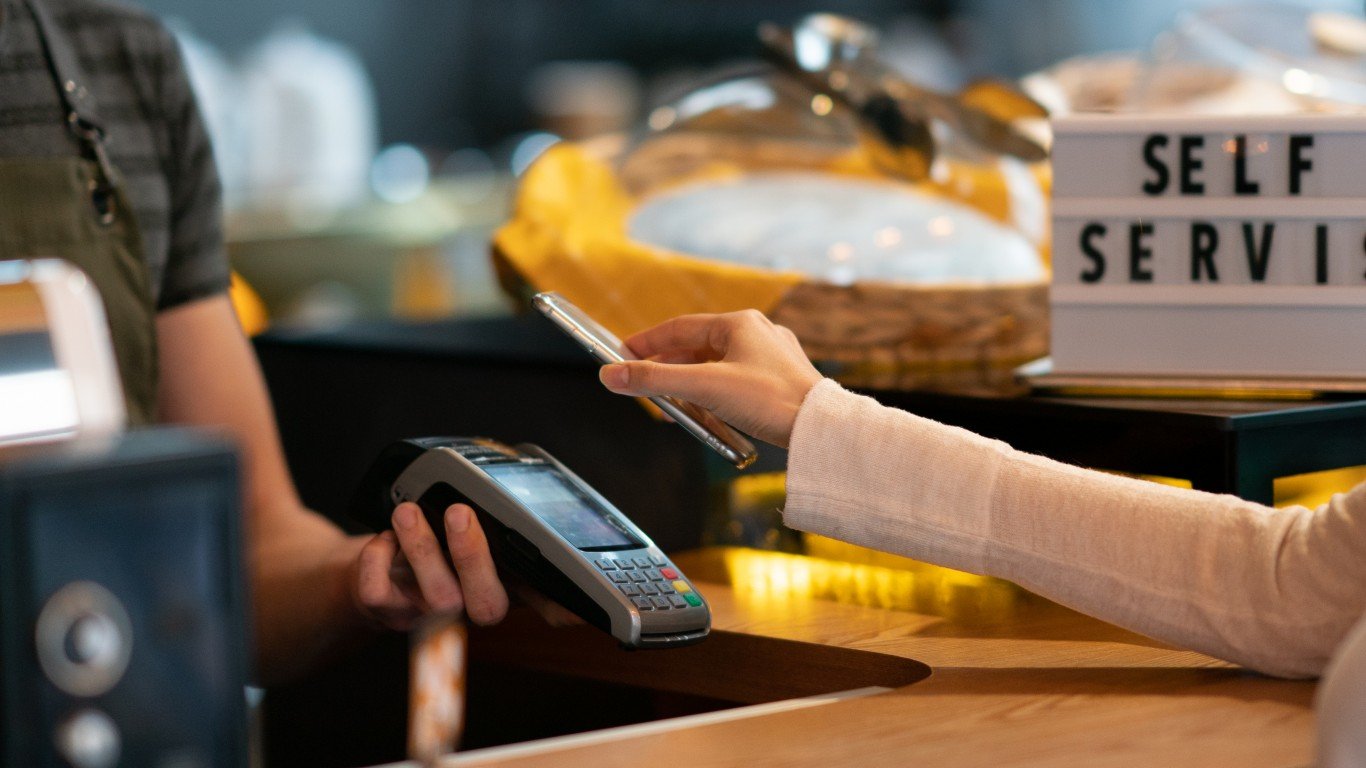
10. You’ll order and pay without touching much
Increasingly, restaurants are introducing automated ordering and paying systems to minimize physical contact between staff and guests. It is now possible to access menus and wine lists with QR codes and pay by credit card or payment app without receiving a printed check. Kiosks and tabletop ordering screens are also becoming popular. The NRA report predicts “an evolving digital ecosystem of apps, services and personal AI assistants.” That doesn’t mean that human interaction is a thing of the past. Restaurants at the MGM Grand Hotel in Las Vegas, to take one example, send diners who reserve a table and place their orders electronically a video in which the chef recommends dishes.
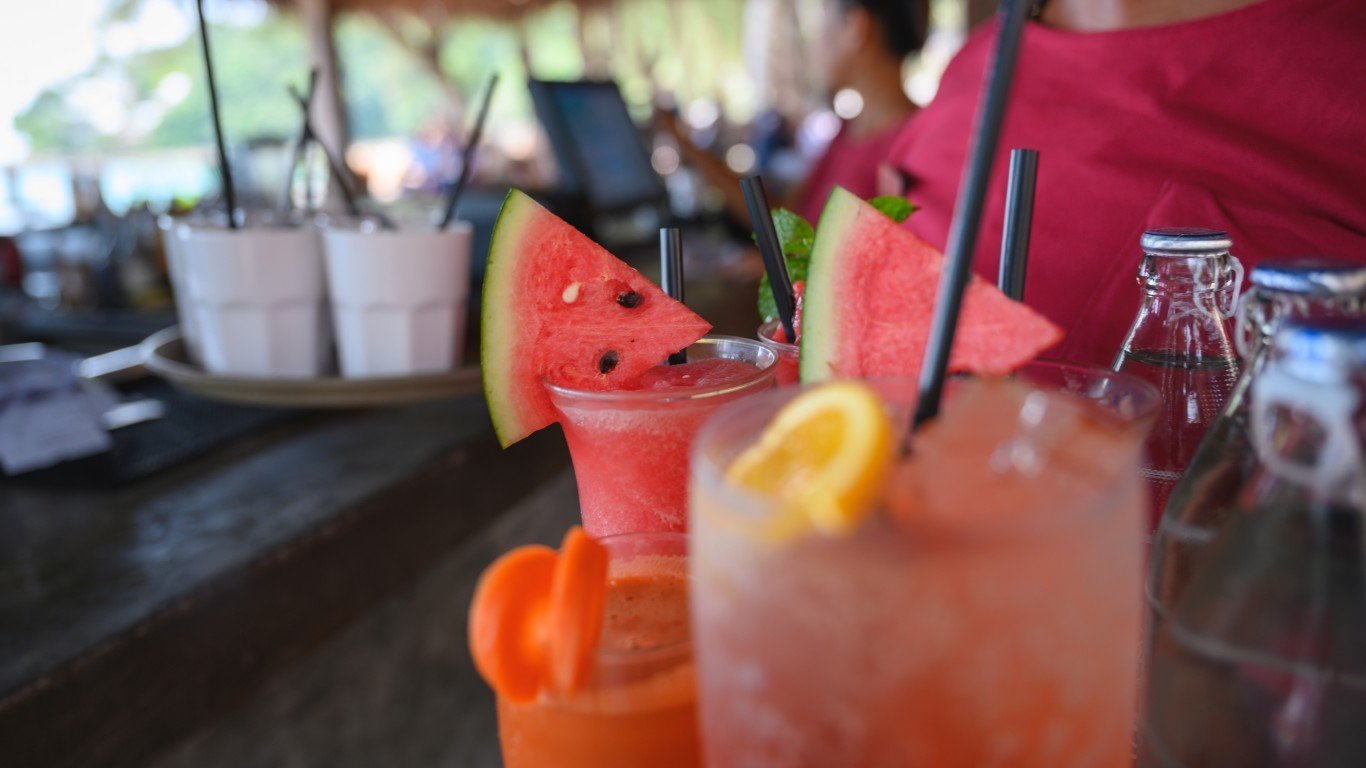
11. Some things will disappear from bars and restaurants
Famously unsanitary bar fixtures like bartenders’ soda guns and pre-cut fruit garnishes will likely disappear out of continued post-pandemic concern for hygiene, as will self-service soda machines. And lingering customer concerns about possible contamination will almost certainly mean the demise of buffets, salad bars, and other help-yourself arrangements. New technologies like automated systems to provide customized choices from buffets are being tested.
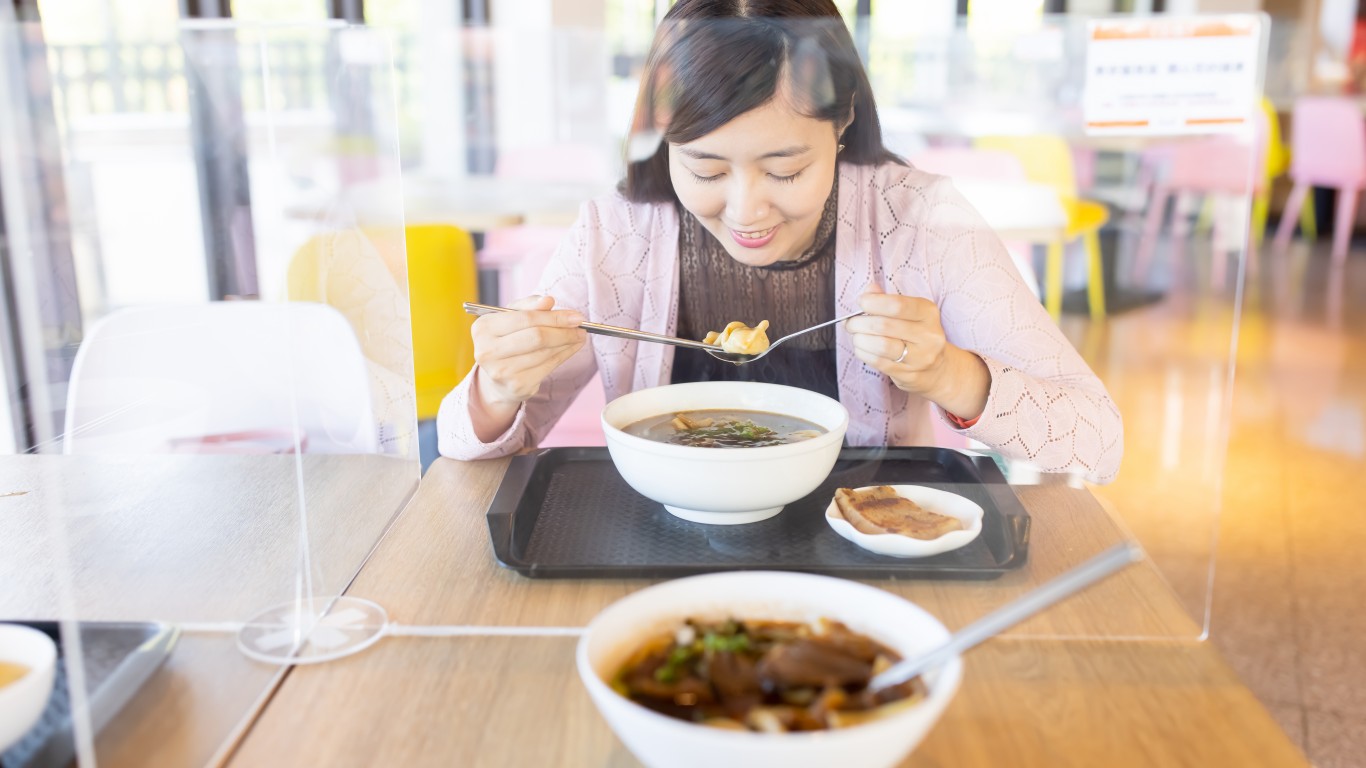
12. Some health and safety measures will probably become permanent
Even when COVID-19 disappears completely from the planet — assuming that it will — industry experts expect sanitation measures introduced in 2020 to remain the new standard. Plexiglass dividers that have been installed in restaurants might well remain in place, and hand sanitizers and improved hand-washing facilities almost certainly will. Data and consulting group Kantar found that guests expect more cleanliness from restaurants now than they did before the pandemic, and that divider screens and socially distanced tables had an unexpected plus side: the enforced isolation “helped participants have a more private, intimate experience with their tablemates.”

13. Customer outreach will get more sophisticated
Building on existing social media marketing programs, operators will get more personal and localized, perhaps using geo-tracking and even facial recognition technology to anticipate customer needs and wants. Frequent-diner databases and loyalty programs will become more common. In general, says the NRN, restaurants will “apply data analytics to predict and capitalize on consumer demand and optimize supply economics.”
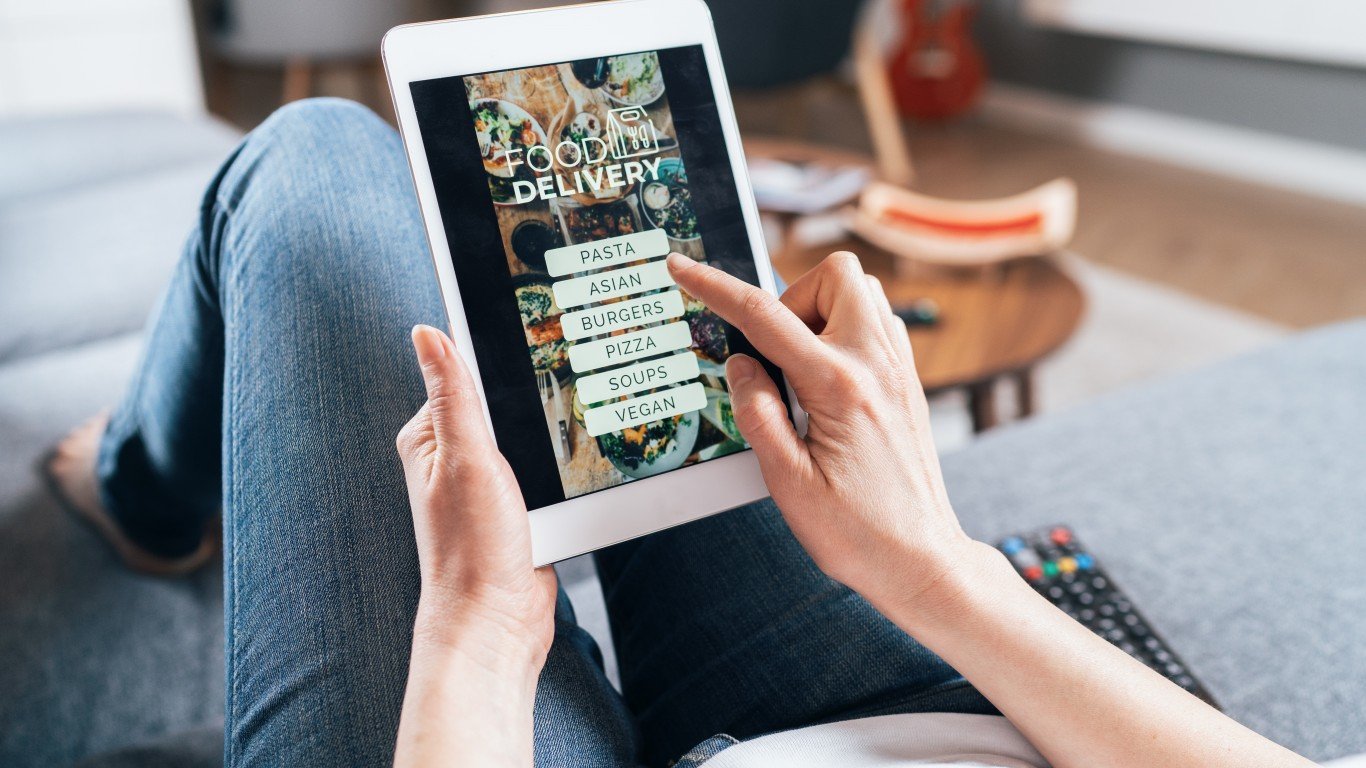
14. Apps may become more important than restaurants
With the rapid rise of food delivery apps and the fact that delivery services will likely launch ghost kitchens of their own, with unique URLs, consumers might become more loyal to the apps than to any real restaurants — at least when they’re ordering in. If they want a certain kind of pizza or a particular Chinese dish, that is, they might not care where it comes from as long as obtaining it is fast and easy.
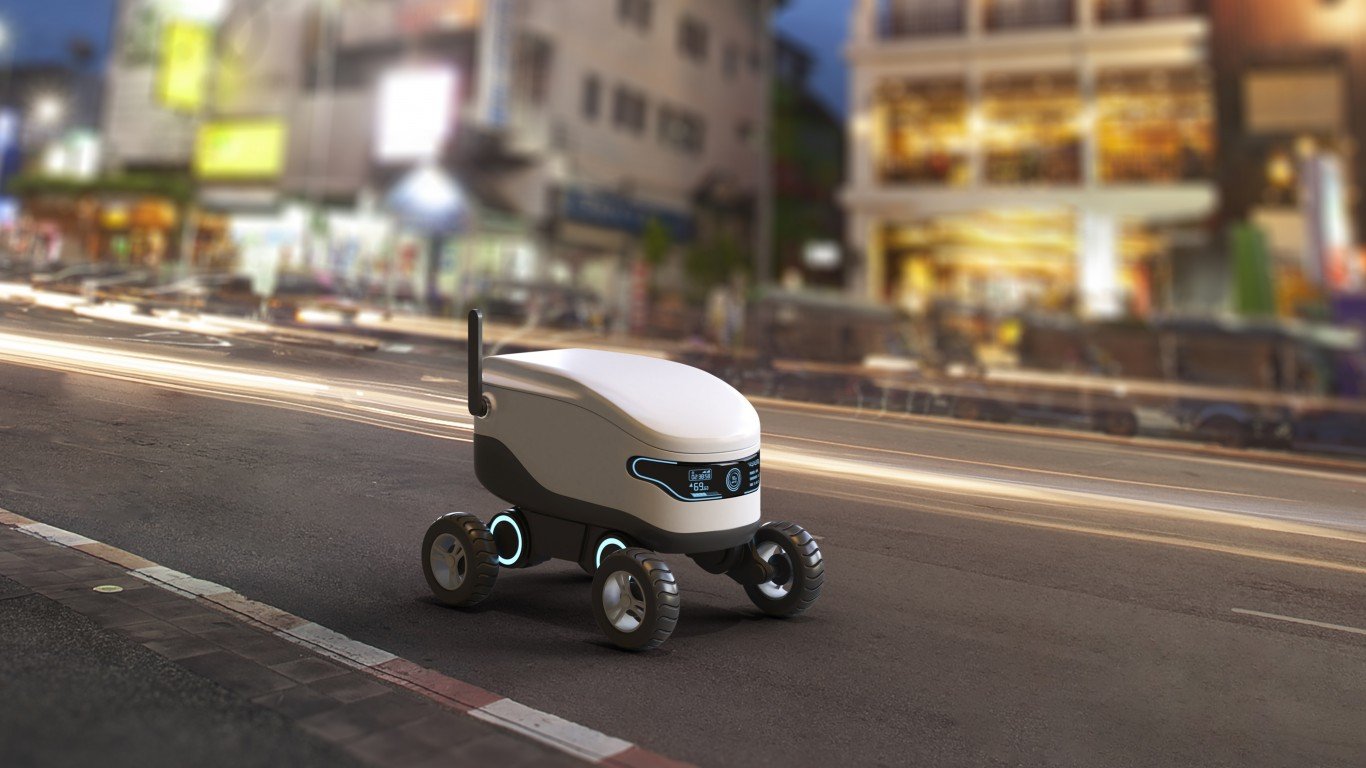
15. Self-driving cars might deliver your food
Though the pandemic may have slowed their development somewhat, autonomous vehicles (AVs) are coming. They might become practical as delivery carriers before they start actually driving people around, and they will even be able to pick up food at drive-thru windows (which will require some redesign of drive-thru layouts). When they do start carrying people, their passengers will have more time to eat, and they will be able to eat different kinds of food because they’ll have both hands free.
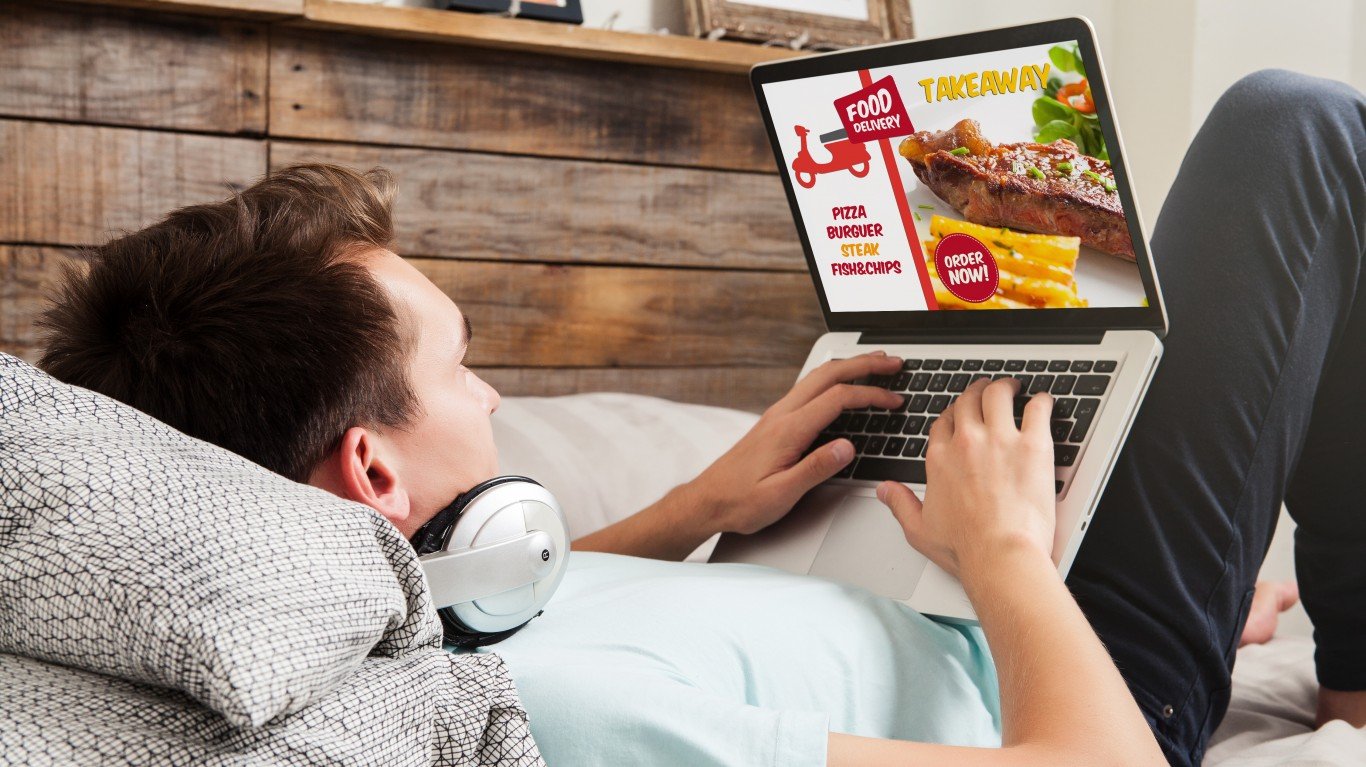
16. Non-food companies will take food orders
As people increasingly order restaurant food to be delivered, rather than going out to restaurants, new alliances could be formed. For instance, says the report, “a media-streaming service could buy or pair with existing meal delivery services to create an all-in-one dinner and entertainment experience.”

17. Algorithms might produce new taste experiences
As AI systems collect and analyze data about foods, beverages, ingredients, and tastes, new recipes and kinds of food and drink could be created. “Some AIs,” the report predicts, “could become as well-known as human chefs, baristas and bartenders.”

18. Climate change could affect menus and prices
What the report calls “weather volatility” could affect growing patterns for both standard and specialty crops and encourage the popularity of lab-grown and plant-based meats or meat substitutes. Carbon taxes on foods themselves or on their production and distribution processes could make them more expensive. More eating places will be conceived and designed to be energy efficient and to minimize waste, and they’ll have smaller physical footprints due to increased delivery and takeout. Packaging for delivery and takeout will become more sophisticated and effective.
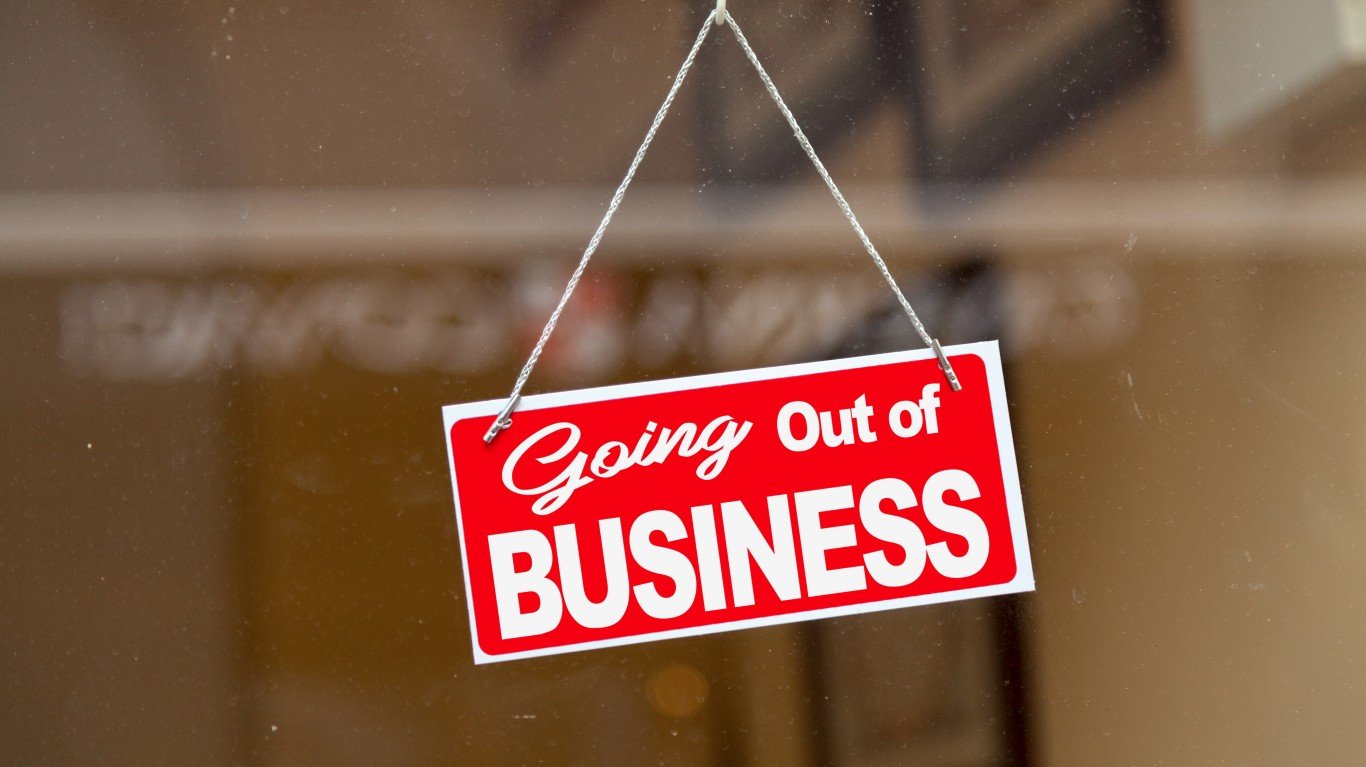
19. There’ll be fewer restaurants to choose from
It’s no secret that the restaurant business has been devastated by COVID-19, with everything from fast-food units to Michelin-starred fine-dining places closing down for good. The NRA recently reported that some 100,000 restaurants around the U.S. have shuttered either permanently or indefinitely, and that 40% of restaurant proprietors surveyed think they’ll probably be out of business by late spring of 2021 if there is no support from the federal government. At least for the foreseeable future, then, our choice of places to dine out will be reduced.
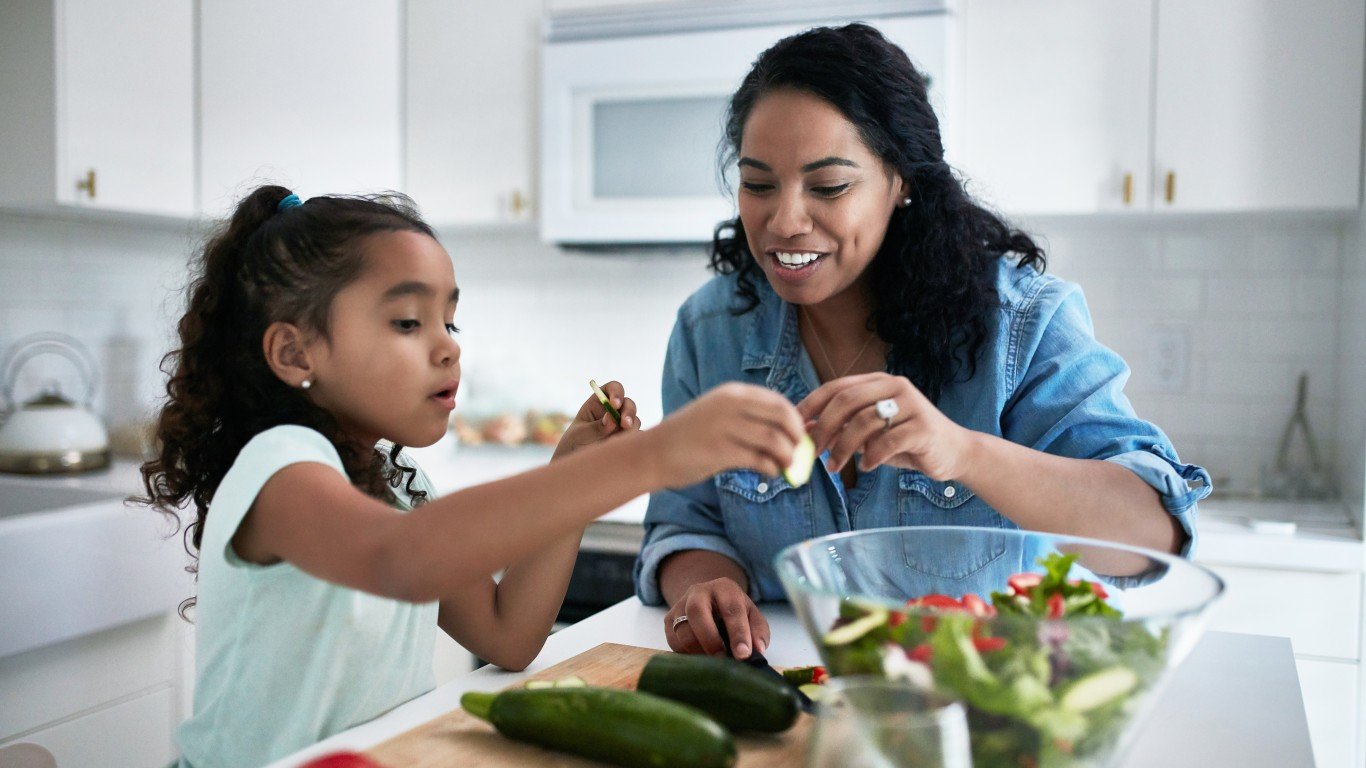
20. We might not care that much if there are fewer restaurants
According to information compiled by international strategy and consulting firm Simon-Kucher & Partners and shared with QSR Magazine, before the pandemic, Americans cooked an average of 33% of their meals at home, eating out 67% of the time. Now the percentages have shifted to 55% at home, 45% away. Though some consumers seem to be getting tired of making their own meals, QSR notes that “the daily quarantine routine of cooking at home is going to be ingrained in a lot of households.” Simon-Kucher also believes that Americans “will be more mindful of where and how they spend their money post COVID-19,” so even when restaurants are fully open and the economy has rebounded, at least some potential diners might just prefer to fire up their home ovens instead of heading out for a meal.
